Why should musical academe be interested in the music business and industry? As a source of financial resouces? That actually is a pretty good reason, but there are a great many artistic and cultural motivations as well, especially at this moment in time. At the center of these is an astonishing melding of technologies, creative processes, musical styles, pedagogical methodology, et al, that present both great risks and tremendous opportunities to the contemporary musician.
Digitalization has created a lingua franca uniting forms of life that previously couldn’t have been further apart. Think of audio recording and photography or film. One of the defining characteristics of the development of music technology, as well as the journey of many musicians from acoustic music alone to the embrace of technology and its musical derivatives, has likewise been the convergence of previously discrete disciplines.
Musical style has also experienced a profound synthesis. Crossover albums are expected of virtually all classical performers, and the line between popular and art music has been nearly erased in the work of composers such as Jack Heggie, Stephen Sondheim or Christopher Rouse-think Bonham, his work for percussion inspired by the drummer of Led Zeppelin.
Convergence will thus be the loose thread informing this recurring column in both the Music Business and Industry component of new Symposium and the MB-I blog. We’ll start with some examples that illustrate the intersections of music technologies and musical styles. In subsequent installment, all species of syntheses are fair game, including commercial and academic fusions, the nesting of what were once radically different creative processes under the umbrella of massive computer applications, and new cross-disciplinary alliances that have emerged as a result.
I. A typical convergence of technologies.
For many musicians, particularly composers, computer notation has been a gateway to an embrace of the full range of technology. Traditional workflows based on paper and calligraphy evolved into digital processes using entirely different procedures for creation, proofreading, error correction, and editing. Audio playback of scores became accurate enough to transition from being an aid to non-reading musicians to an advanced tool for aurally troubleshooting fast ensemble passages or intense syncopation. With the ability to create professionally typeset scores came at least two radically new possibilities for composers. First, changes to the score could now be effortlessly made, as opposed to the very expensive and time consuming method of recasting typesetting plates. The gestation period of a piece could theoretically be infinite, with changes being made with every performance, and the compositional process could thus more closely approach improvisation. Second, the composer became the typesetter. Traditional publishers came to require the composer to copy the score themselves, leading a large number of them to self-publish. The primary benefit of traditional publishers now became distribution. Still, why settle for a ten percent return, when self-publishing would yield around ninety?
If a composer took on this responsibility, then other technologies were required. A website was necessary for distribution, complete with a shopping cart for sales and audio/visual samples of one’s work. None of these elements are prohibitive. Web authoring software became relatively cheap and easy to use (eg, Freeway, no code writing), online shopping carts could be free (eg, Mal’s e-commerce), and PayPal efforlessly takes care of credit card purchases electronically for a modest fee.
Once the score is in the digital domain however, deeper convergences emerge. From the notation, a midi file can be extracted, which can then be used to create an electronic demo recording using virtual instruments. In the past, such midi files were often laden with excess information and required more editing than was worthwhile, but with advances in compatibility, the link between notation and sequencers is almost effortless. Here’s an example:
1. A score excerpt of an original composition for cello and piano typeset in Sibelius. Note the col legno articulation in the cello, we’ll come back to it:
Rutkowski: Confluence for cello and piano

2. The score is saved as a Standard Midi File (Type 1) then imported into Pro Tools, where it automatically creates the correct two midi tracks, with no distortions of the note information. Here is a picture of the midi editor window of the cello part, displaying the standard piano roll:
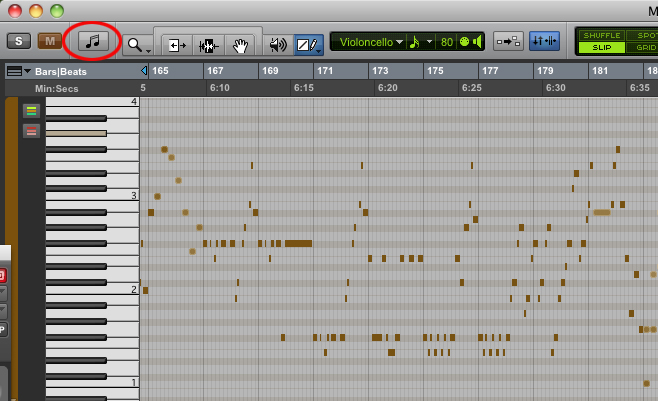
3. When you click on the circled button above, you discover a powerful recently-added feature in Pro Tools. After Sibelius was acquired by Avid, it was embedded in Pro Tools as a midi control. One can now sequence with notation and not just using the piano roll:
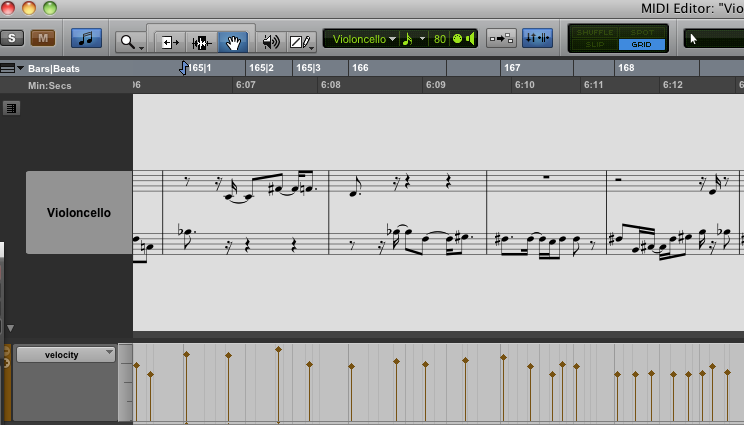
4. In order to hear the cello and piano parts, virtual instruments must be inserted, and a Vienna Symphonic Library plug in was chosen for the cello. The Vienna Symphonic Library is probably the premier orchestral sample library on the market today. It is used extensively in the professional film scoring world, and is organized into specific articulations of an orchestral instrument, for example sul pont or pizz. Recall that attention was drawn to the col legno in the score. Note that same articulation is displayed in the upper left of the screen shot below.
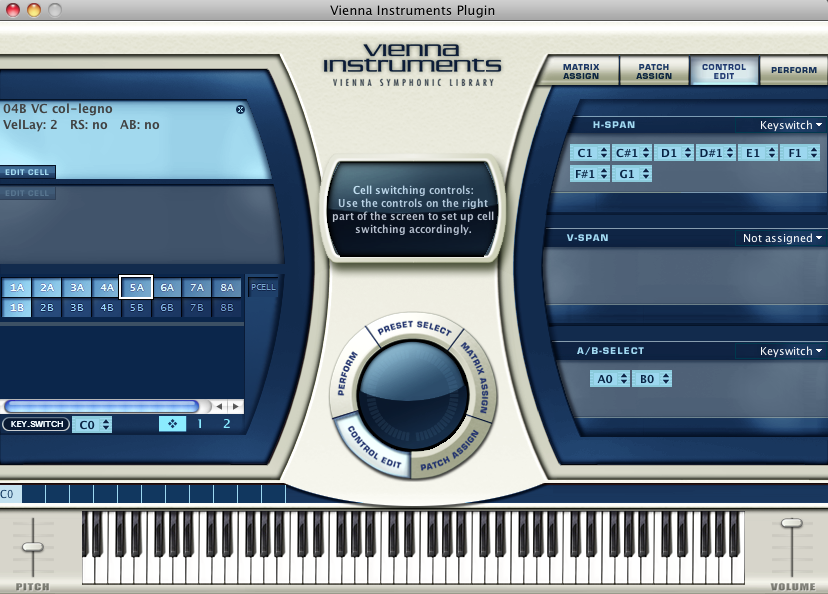
5. Here is an audio file of the Pro Tools/Vienna Symphonic Library realization of the imported Sibelius score. Pay special attention to the realism of the cello samples, including the col legno and other articulations, idiomatic vibrato, and generally excellent quality of the sound. Score of the excerpt can be found here.
Let’s take a step back to highlight the convergences in this example. The digitization of the score in computer notation allowed that information to be easily exported to a sequencer, and the audio was brought to life through a virtual instrument based on live recordings of the most skilled performers. The ancient process of composition using pencil and paper is thus directly linked to radically different enterprise of electronic synthesis and sampling. A new “virtuous circle” has been created between notation and sequencing where the score that is imported from Sibelius into Pro Tools can be altered in response to hearing the very faithful rendering in Vienna Symphonic Library. The sequence can be revised, and then exported back out to Sibelius, and the new parts distributed to the live players.
It is instructive to look a bit deeper into the convergences attaching to Vienna Symphonic Library itself. First, the technology is state-of-the-art. VSL built its own recording studio where the performers are recorded in a room with no reverberation at all. The company trumpets its “unique Performance Detection algorithms and the most powerful audio-engine on the market”. And yet the software is fundamentally dependent on the performances of highly skilled musicians, and has strong links to the Vienna Philharmonic. That orchestra in turn has direct links to Brahms, Mahler, Wagner and Bruckner-the very heart of western art music. VSL’s founder is a substituting cellist with the orchestra, and the Philharmonic has recorded samples for the company. And so we see another synergy between the profoundly traditional and historic, and the thoroughly technological and current.
II. A convergence of style
Music style is an another parameter displaying remarkable convergences. European art music, folk musics, fully notated music vs. improvisation, jazz, Broadway, and world music– all have blended into a creative soup, proving Duke Ellington’s famous formulation (“There are only two kinds of music – good and bad”) to be most prophetic.
While we are all familiar with myriad classical artists releasing crossover albums, or the runaway success of jazz programs in the conservatory, it is important to realize that stylistic convergence long been an artistic constant. Indeed, this author’s first experience of the College Music Symposium was an excellent example of traditional and popular stylistic analysis being juxtaposed in the academy. That 1998 edition (vol. 38) contained both Joel Lester’s excellent discussion of baroque genius, “J. S. Bach Teaches Us How to Compose: Four Pattern Preludes of the Well-Tempered Clavier” and William Thompson’s analysis of modality in Miles Davis landmark album, Kind of Blue (“On Miles and the Modes). A much earlier example speaks to the fundamental unity of all musical expression, and can found in C. P. E. Bach’s 1753 classic text, Versuch über die wahre Art das Clavier zu spielen (An Essay on the True Art of Playing Keyboard Instruments). Most often only the first part of the text is studied, which is an expert guide to the realization of figured bass. However, this is only the entry point to the text’s fundamental topic, which is the very fiber of improvisation. The astonishing last chapter is a step-by-step guide to improvising an entire piece from a short bass line. One might ask, are there any fundametal differences from the creative process of a contemporary master such as Keith Jarrett?
Academic studies equating popular and art music have continued to proliferate. Witness Walter Everett’s (University of Michigan) two-volume Oxford University Press series The Beatles as Musicians (2001). Schenkerian graphs, learned discussion of counterpoint, and serious musicological analyses of such tunes as I Wanna Hold Your Hand are tempered with an intimate knowledge of how rock and roll is made.
While many (if not most!) academics would be astonished to see Beatles tunes given the same sort of analysis as a Chopin Prelude, the following example shows how far the literature has left them behind. This graph of A Hard Day’s Night was produced by Drew F. Nobile for his article “Form and Voice Leading in Early Beatles Songs” in Music Theory Online (MTO, Volume 17, Number 3, October 2011). What is especially fascinating is that is a second-order study. Not only has Nobile rigorously analyzed the piece, but his work explicitly references and builds upon Everett’s research.
Drew F. Nobile, Form and Voice Leading in Early Beatles Songs
“A Hard Day’s Night”
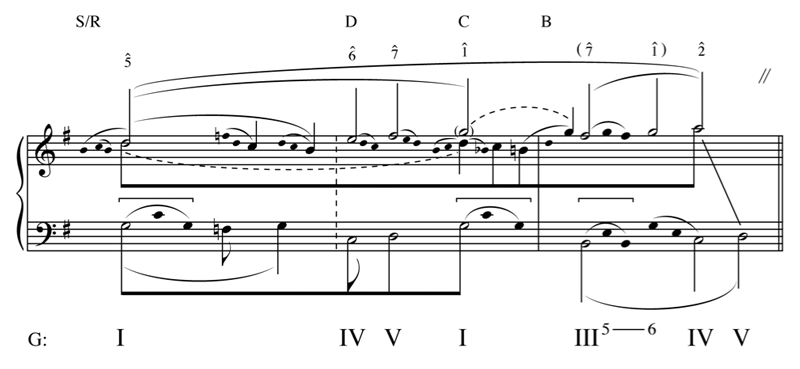
A related issue is the interaction between the commercial and art music worlds. A great deal, if not the majority, of music technology in the contemporary moment is being developed in the commercial market. Recording hardware and software, signal for the production of popular music and then perhaps appropriated by art music. This is not a one-way street, however. There are a staggering number of innovations arising from the academy and art music world. Synthesis provides many examples. Subtractive synthesis began as the work of engineers such as Robert Moog and was first embraced by electronic art music composers. Frequency Modulation (FM) synthesis was developed by John Chowning at Stanford University and later commercialized by Yamaha in the hugely successful DX7 keyboard. Granular synthesis is the principle behind the revolutionary time and pitch shift technologies so prevalent in digital audio workstations today, such as Pro Tools Elastic Audio. One of the creators of this technique was composer Iannis Xenakis and utilized in his 1959 work, Analogue A-B for string orchestra and tape.
This dialectic is at the core of the academy’s relationship to the music products industry, and continually produces new variations. The digital audio workstation Ableton Live provides a fascinating example. Originally developed for use by DJs, Live began to find a home in universities and art music performances, but there is yet more to the story. The graphical programming environment Max/MSP emerged from IRCAM (Institut de Recherche et Coordination Acoustiqe/Musique), the research center founded by Pierre Boulez and located in the Pompidou Center in Paris, as a tool used by computer musicians. But it followed the reverse course as Live and found its way into the work of DJs. The two companies formalized the relationship with Live releasing the very popular plugin, Max for Live, a fully functional version of Max that works solely within Live.
III. A unifying principle, the Digital Audio Workstation
How to process this infinite pool of technological possibilities? One clarifying tool can be found in the Digital Audio Workstation. The DAW (e.g., Pro Tools, Digital Performer, Cubase, Logic) is perhaps the definitive music application of the last few years. It has evolved into an aggregator of programs that are universes in themselves, harmonizing and homogenizing them into a seamless killer app. We’ve seen one such example where notation, sequencing and sampling merged and were made to rhyme to fundamentally alter the art of composition.
The history of the DAW provides yet another example of convergence. Its two major subdivions, audio recording and sequencing, began as separate applications. Thus Pro Tools began as Sound Designer in the 1980s as program to edit audio samples and evolved into one of the first digital audio recording platforms. At the same time, Mark of the Unicorn released Performer, one of the first and most successful sequencing programs. Each type of application began to incorporate elements with varying degrees of success until both elements were of equal strength. Performer became Digital Performer with excellent audio recording capability. (It was quite a surprise to discover that when the author was recording a jazz CD in 2005 that the studio was using DP exclusively for the audio recording). With the release of Pro Tools 5 in 1999, rudimentary midi sequencing added was added, but it wasn’t until 2008 and Pro Tools 8 that its capability approached that of DP. And so the mature DAW was born.
The seemingly innocuous term plugin describes elements that can be inserted into the DAW, but even a cursory examination of a typical plugin reveals microcosms of profound depth. Different forms of synthesis were mentioned above. Each is available as a plug in, and each are worthy of extensive study in themselves. Some screenshots of plug in graphical user interfaces (GUI):
1. Subtractive synthesis: Arturia has modeled the Moog Modular
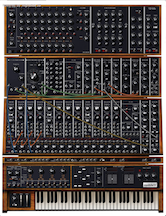
2. Native Instruments models FM Synthesis with its FM8:
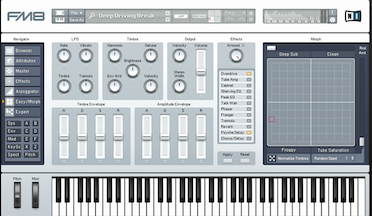
3. Reason creates a hybrid of granular and wavetable synthesis with its Malström
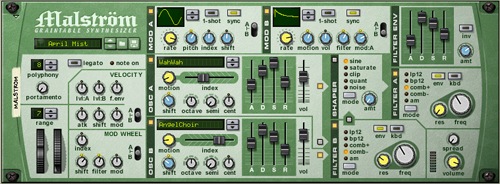
Just a cursory glance at the GUIs can give a sense of the power of each of these plugins. These are only three of hundreds of synthesis plugins. There are similar galaxies of sampler and other virtual instrument plugins. Add to this thousands of processing plugins, such as reverb, delay, chorus, flanging, equalization, de-essing, compression, exciters, etc., and one can get a sense of the central role of the DAW as an agent of convergence, par excellence. Avid has a very instructive video on its website, which tells the story of the creation of the score to the film Avatar. Remarkably, it was done completely in one Pro Tools document, from composition through scoring, mockup with virtual instruments, orchestral recording, sound design and mixdown to 5.1 surround. One of the many take-aways from this is the statement that when the same team made Titanic, they carried two tons of equipment. On Avatar, they used one Mac Pro computer. Everything was in the box, displaying the centralized power of the DAW.
IV. Conclusions
Why should musical academe be interested in the music business and industry? Perhaps because so many fundamenal issues about what it means to be a musician today are directly related to that form of life. With disciplines crashing into each other and bringing together infinitely complex processes and disciplines that previously were quite distinct. As a result, career paths and artistic processes are changing at a dizzying pace.
Such turmoil might lead on to ask, is tradition dead, are musicians obsolete? Perhaps there are lessons to be learned by looking deeper at a product like the Vienna Symphonic Library. In spite of its cutting edge technology, deep musicianship must guide its use. VSL makes this statement on the role of tradition in the manufacture of their product: “The only way to compile the huge number of samples necessary for this undertaking while maintaining the highest quality standard is to assemble a large, top caliber post-pro team. There are tuning specialists, denoising experts and editors who specialize in specific instrumental classes. Most all of these talented individuals are trained musicians who are able to blend their technical knowledge with the artistic finesse necessary to achieve our ambitious quality goals.” New musical processes seem to be informed by technology but still point back to artistry that is immutable through the ages. With infinite possibilities, organic musicianship is needed more than ever to provide leadership through a trained intuition.
On the VSL website, there is stunningly realistic programming of the Rite of Spring by Jay Bacal. This is easier to do with the dry staccato texture of Stravinsky that a more legato work Appalachian Spring (realized by the same programmer). One could say the only way one knows that this performance is not by real players is that there are none of the inevitable mistakes. However, there is another fundamental point here, and that is that the excitement of hearing this music in a perfect recording fades rather quickly, but it never fades in a live performance. The author recently had the priveledge of hearing his local orchestra, the Fort Wayne Philharmonic, perform the work and they were rewarded with a full house and a captivated audience and a long standing ovation. Surely part of the thrill was the work’s unabated ability to shock. A polite elderly woman who absolutely hated the piece echoed the reaction to the premier of a hundred years ago. But live performance is as nuanced as life itself. The balance between tradition and innovation is at the core of the academy’s study of the music business.


